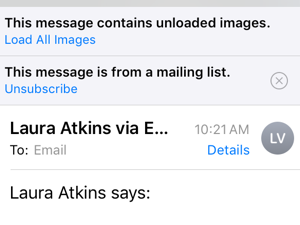Deliverability rules
- laura
- August 18, 2025
- Delivery improvement , Industry
Hot Take:
Anyone who has to know exactly what the rules are for inbox delivery is trying to figure out how close they can get to violating the rules without negative consequences. Senders that comply with the spirit of the rules don’t care what the specifics of the rules are.
A complaint I hear a lot is that no one tells you the rules of deliverability and that makes deliverability haaard. Well, there is a lot of information to know and things you need to do, but the gist of it all is: send email people have asked you to send them mail. That’s it. Senders that do that generally don’t have deliverability problems.

Recently I’ve been creating workshops for deliverability people and I keep finding places where common knowledge about deliverability is complicated, messy or just plain wrong. Usually what happens is start trying to explain something about email deliverability with an eye towards building it into a sensible framework to teach people. But as I start thinking about it, I realize that there’s a lot of contradictory and disordered information about a specific topic. Before I can teach the concept, I need to actually resolve my own thinking and abstract it out to be able to make it make sense to people.
Last week I was developing a chunk of content discussing the lack of published rules for deliverability. My goal was to start with that and then move on to explain that was OK, we didn’t need it to effectively troubleshoot problems. That was an introduction to my black box model to troubleshoot deliverability issues. I wrote “It’s a widely accepted truth in deliverability that we don’t know the rules. ISPs won’t tell you what you need to do to get to the inbox and they won’t tell you why you were blocked and they just leave to you figure it out.” But after I wrote that, I thought that wasn’t true at all. I realized we have a lot of explicitly stated rules.
The obvious example is the rules Yahoo and Google announced in October 2023. They made a huge splash by detailing exactly what rules they were laying down for incoming mail. Other ISPs followed suit and we now have a rule that all (bulk) mail must have SPF and DKIM and should pass DMARC and have list-unsubscribe headers. We were given the exact rules to follow. These rules state that mail that doesn’t comply is at risk of deliverability problems. We also have rules like the message must be an actual email as defined by the RFCs and if the mail isn’t email it may not be delivered.
It is true, there are some rules where we don’t have details and specifics. Those rules don’t have specifics tied to them. Examples of these rules are “keep complaint rates low” or “don’t send mail to non-existent addresses.” We don’t have specific numbers tied to these rules. They’re spirit rules not letter rules. This is what a lot of folks complain about. Mostly, I think, because they want to be able to say “I have complied with the letter of the rule and have not sent mail with this number of bounces, so you must put my mail in the inbox.”
That’s where the hot take comes in. We do know what some of the rules are for deliverability. Some of them are rules we’ve discerned using the black box model I’m working on but some of them have been explicitly stated. But often when I hear people complain that we don’t know the rules of deliverability, they’re mostly complaining because they want to be able to argue when their mail is blocked because they followed the letter of the law. The folks who comply with the spirit of the law have few deliverability problems.
